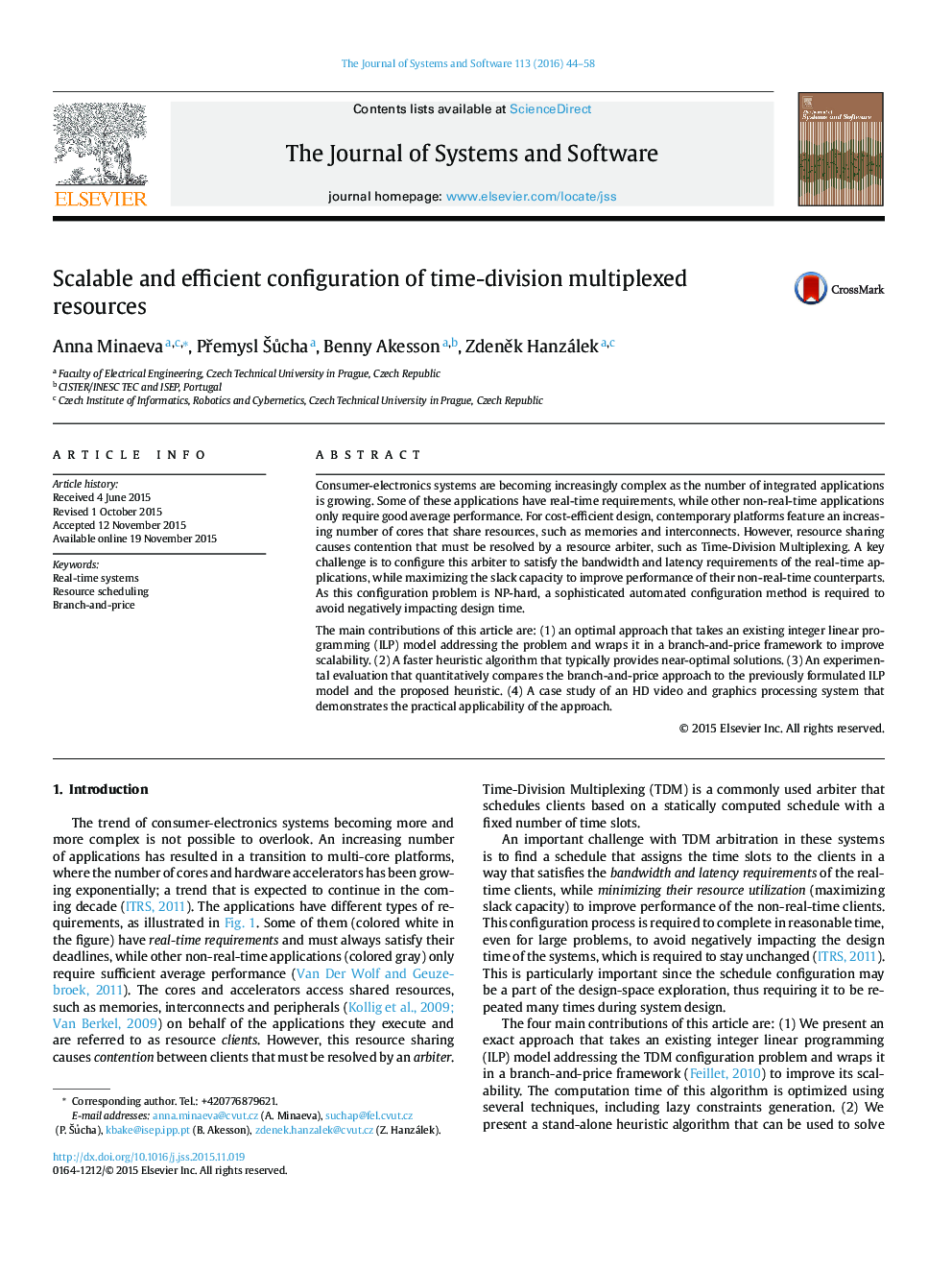| Article ID | Journal | Published Year | Pages | File Type |
|---|---|---|---|---|
| 459238 | Journal of Systems and Software | 2016 | 15 Pages |
•Branch-and-price to configure resources shared by Time-Division Multiplexing.•Numerous computation time optimizations for branch-and-price are proposed.•The proposed approach improves scalability of the existing approaches.•The practical relevance is demonstrated by applying it to a case study.
Consumer-electronics systems are becoming increasingly complex as the number of integrated applications is growing. Some of these applications have real-time requirements, while other non-real-time applications only require good average performance. For cost-efficient design, contemporary platforms feature an increasing number of cores that share resources, such as memories and interconnects. However, resource sharing causes contention that must be resolved by a resource arbiter, such as Time-Division Multiplexing. A key challenge is to configure this arbiter to satisfy the bandwidth and latency requirements of the real-time applications, while maximizing the slack capacity to improve performance of their non-real-time counterparts. As this configuration problem is NP-hard, a sophisticated automated configuration method is required to avoid negatively impacting design time.The main contributions of this article are: (1) an optimal approach that takes an existing integer linear programming (ILP) model addressing the problem and wraps it in a branch-and-price framework to improve scalability. (2) A faster heuristic algorithm that typically provides near-optimal solutions. (3) An experimental evaluation that quantitatively compares the branch-and-price approach to the previously formulated ILP model and the proposed heuristic. (4) A case study of an HD video and graphics processing system that demonstrates the practical applicability of the approach.
